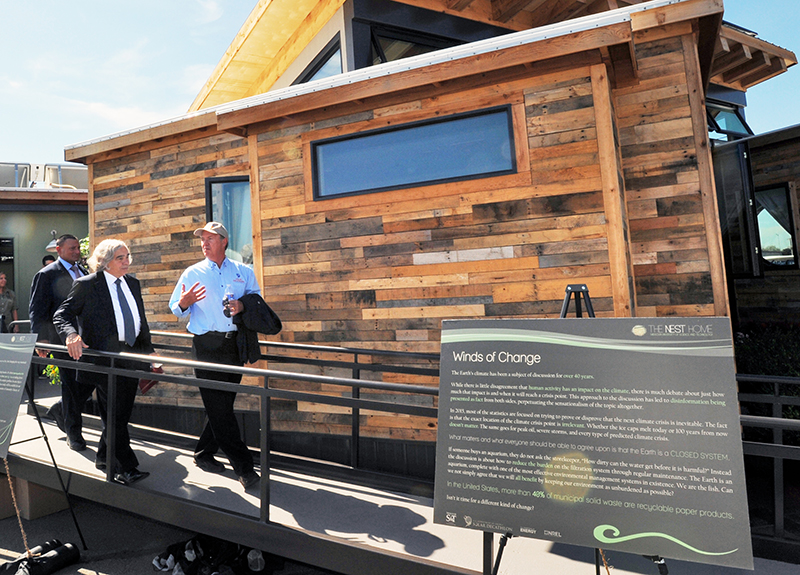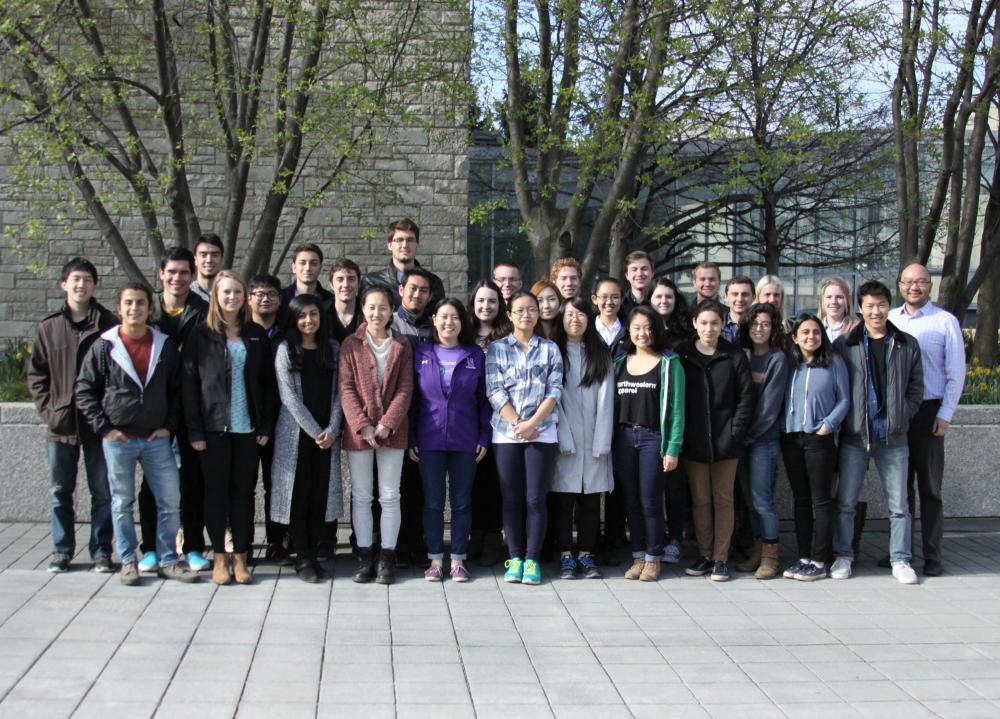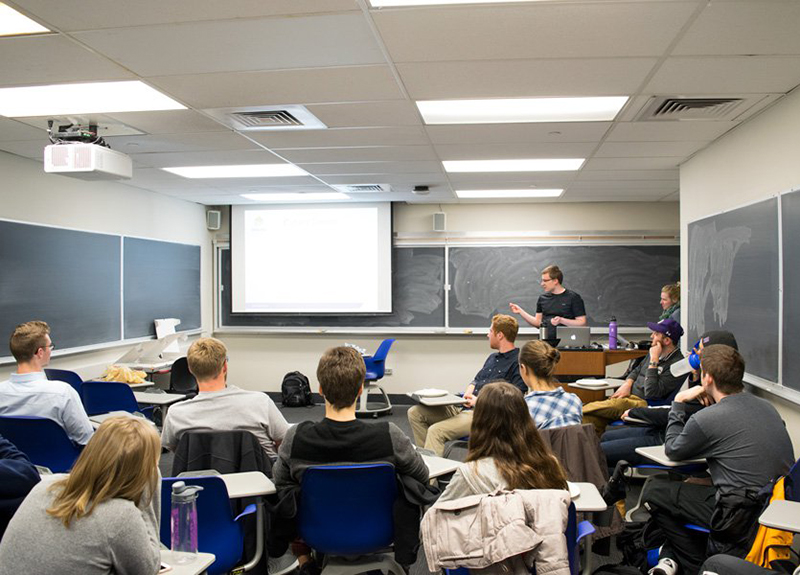Article originally published in Northwestern Research News.
In a matter of months, the gravel-surfaced lot at 669 Colfax Street in Evanston will give rise to Northwestern’s most energy-efficient building.
Designed with roof-integrated solar panels, ultra-efficient heating and cooling systems, and photocatalytic surfaces that break down harmful pollutants in the air, the student-led House by Northwestern (HBN) is a showcase of sustainable living.
A ceremonial groundbreaking on June 2 marked the start of a three-month construction plan that will conclude with rigorous testing of the home’s energy-efficient systems.
With hard hats and shovels nearby, Evanston Mayor Steve Hagerty, Northwestern’s Vice President of Research Jay Walsh, and HBN faculty director Dick Co spoke to a crowd of about 50 students, faculty, staff, partners, donors, and area community members.
“House by Northwestern illustrates how research and discovery can respond to real world problems like climate change,” said Walsh. “This project is an opportunity for students to put science and theory into practice in a way that embodies the concept of Whole-Brain Engineering,” a philosophy pioneered at the McCormick School of Engineering.
As Northwestern’s first-ever entry into the US Department of Energy Solar Decathlon — a biennial collegiate competition that challenges student teams to design and build full-size, solar-powered homes — HBN will be disassembled and shipped to Denver this fall. There, the Northwestern team will rebuild the house to compete against a dozen other entries in contests such as architecture, energy production, innovation, market potential, and communications.
Many partners have generously committed their time and resources to the project, and Walsh thanked them for their support. The list includes: Adrian Smith + Gordon Gill Architecture, FedEx, GAF, Power Construction, Thornton Tomasetti, Kelso-Burnett, The Hill Group, Schneider Electric, PURETi, DIRTT, Lutron, Beko, Sunrooms-Enclosures, Evanston Lumber, Bluebeam, Lifeline Batteries, Central Piers, Crate & Barrel, Marvin, 3M, and Kipnis Architecture + Planning. The list is certain to continue to grow as the team approaches the competition, said Maggie Waldron, HBN director of program operations, partnerships, and communications.
Support from within the University has come from the Weinberg School of Arts and Sciences, McCormick School of Engineering, Medill School of Journalism, Kellogg School of Management, Facilities Management, the Office for Research, the Institute for Sustainable and Energy at Northwestern, Alumni Relations and Development, Corporate Engagement, SustainNU and the Northwestern Sustainability Fund, Neighborhood and Community Relations, the Farley Center for Entrepreneurship and Innovation, the Segal Design Institute, Global Marketing and Communications, The Garage, and the Osher Lifelong Learning Institute.
Mayor Hagerty said he was looking forward to coming back and walking through the finished structure, “a carbon-free home, right here in Evanston.”
Earlier in the day, Hagerty joined with 180 mayors to object to President Trump's decision to withdraw the United States from the Paris Climate Accord. Hagerty said Evanston would remain committed to reducing greenhouse gas emissions.
Once finished, House by Northwestern is expected to be about 90 percent more energy efficient than the average home.
Stay current on news and events by signing up for the HBN newsletter on the team’s website or by following them on Twitter and Facebook. For more information on HBN, contact Waldron at m-waldron@northwestern.edu






